A Complete Guide To Photochromic Lenses

Photochromic lenses promise to protect our eyes from 100% of UV rays – though only when they come into contact with sunlight. Otherwise, the lenses remain clear. This process happens automatically when we go from indoors to outdoors, without having to switch from prescription glasses to prescription sunglasses.
Curious to know how photochromic sunglasses work, what their benefits are and whether you can get them even with a blue light filter? Then read the complete guide to photochromic lenses on Lentiamo.
What are photochromic lenses?
Photochromic lenses, also called variable tint lenses, are designed to react to ultraviolet light. The lenses darken in bright light conditions, i.e. in ultraviolet radiation. Without activation of UV light, the lenses remain in their clear state.
Photochrome lenses can provide a slight tint if required. They change their colour depending on how bright the light is. Therefore, photochromic lenses will only darken very slightly in certain situations, e.g. when the room is brightened by sunlight.
Coupled with 100% UV protection, transition lenses ensure that your eyes stay comfortable and healthy all year round.
They are not only useful for everyday activities, but also for sports. Sports sunglasses with 400 nm protection keep you safe from the bright sun. You can use them outdoors, e.g. when golfing, cycling, fishing, skiing, running, and tennis, without sacrificing visual comfort and UV protection.
How do photochromic lenses work?
Photochromic lenses work with molecules. These silver halide and silver chloride molecules are responsible for the lenses to change colour so that they can darken in bright light conditions and clear indoors.
When spectacle lenses are exposed to UV light, trillions of photochromic molecules begin to temporaily change structure . So when the shape of a huge number of molecules changes simultaneously, the surface of the lens darkens.
The result is a pair of glasses that turns into photochromic sunglasses and then back again, without any intervention other than bright sunlight.
How long does it take for photochromic lenses to change from light to dark?
When Corning Glass Works' first photochromic lenses were launched in 1964, the lenses started reacting to UVA and UVB light only after a few minutes and reached maximum darkness after 15 minutes. Later models still needed up to a minute to adapt to the lighting conditions.
Today there are several brands that make use of a very rapid photochromic technology. This state-of-the-art innovation enables the transition from clear to dark within seconds.
The chemical process works the other way round, too, if you move indoors from outdoors. The dark shade of the lens fades in the first few minutes inside and becomes clear.
Did you know that the same technology is available in contact lenses? The lens materials of the bi-weekly lenses Acuvue Oasys with Transitions react to sunlight in seconds and offer you 100% UV protection on your eyes when exposed to the sun.
What are the advantages and disadvantages of photochromic lenses?
In order to make it easier for you to decide whether or not it is worthwhile for you to buy photochromic glasses, our opticians have summarised all the advantages and disadvantages of photochromic technology.
The pros of photochromic lenses
- Photochromic glasses are cost effective. If you are the proud owner of a pair of photochromic glasses, you don't need to purchase two glasses, i.e. sunglasses and normal glasses, but you get the best of both, combined in one effective solution.
- Transitional lenses are the perfect companion for those who tend to be a little lazy or careless. Because with photochromic lenses you can see and work perfectly both indoors and outdoors AND you limit the risk of losing your glasses.
- Photochromic lenses can be equipped with anti-reflective coating. This allows you to keep your eyes comfortable even on reflective surfaces such as snow or road signs.
- Photochromic eyewear is available in many different designs, colours and shapes. Whatever style or trend you follow, photochromic lenses from popular brands like Ray-Ban will complement your look.
- The biggest advantage, however, is undoubtedly the built-in filter against sunlight and harmful blue light (more below).
The cons of photochromic lenses
- One drawback of photochromic lenses is that they fade more slowly than they darken. It takes them on average between 20 to 30 seconds to clear, depending on the brand and the design.
- Temperatures play a role in the efficiency of transition lenses. Photochromic lenses are affected by cold weather – this means that it takes a little longer for them to react to UV rays. In addition, photochromic lenses get darker at lower temperatures and their fading speed decreases when the lenses are cold.
- Phototropic lenses can be a disadvantage when driving. Since modern car windscreens block the UV light needed for the lens to react, light-sensitive lenses in cars remain in their inactive state. In addition, you shouldn't wear tinted lenses at night or in poor visibility.
Can I get photochromic lenses with a blue light filter?
Some photochromic lenses offer you protection not only against ultraviolet light but also against visible light, i.e. harmful blue light. Without protection, blue light waves reach our eyes unhindered for several hours every day, damaging our eye health. The light emitted by screens such as computers, tablets, mobile phones and televisions can cause digital eye strain, difficulty in falling asleep and headaches.
These glasses give you perfect protection against harmful UV rays and screen light. The blue light filter in the lenses activates when you look at a digital screen. They provide 100% UVA / UVB protection and blue light protection.
Sources:
1. Vision Ease, https://www.visionease.com/…gebypage.pdf
2. NCBI, https://www.ncbi.nlm.nih.gov/…/PMC7259785/


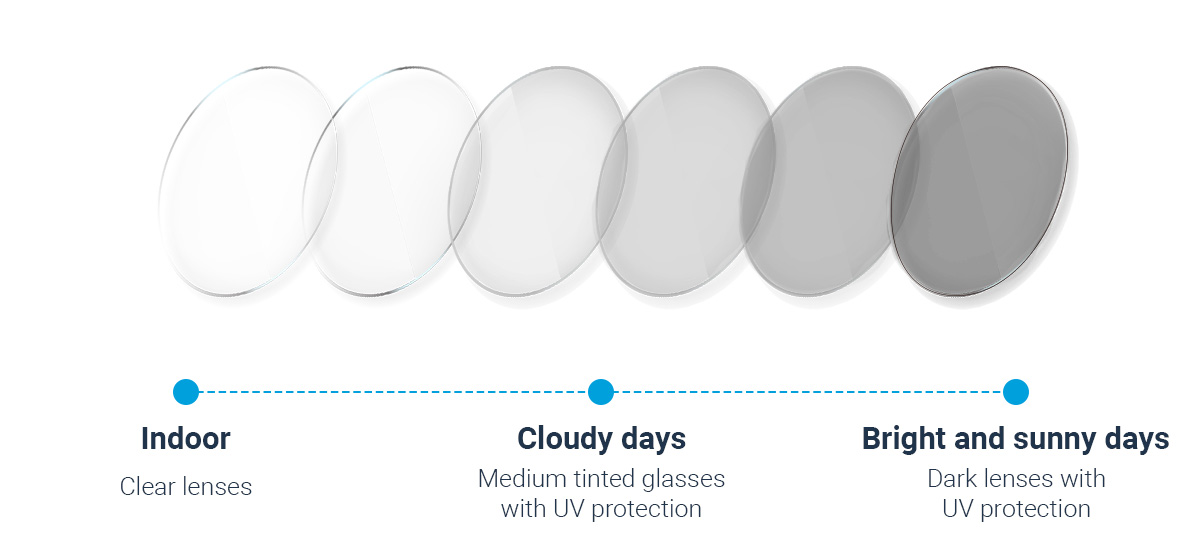

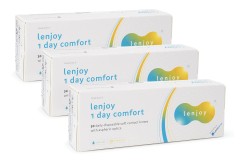
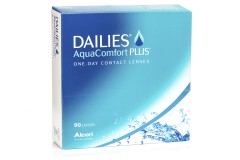
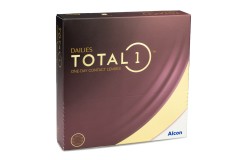

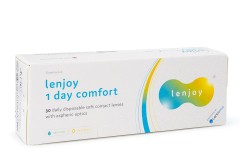
Comments